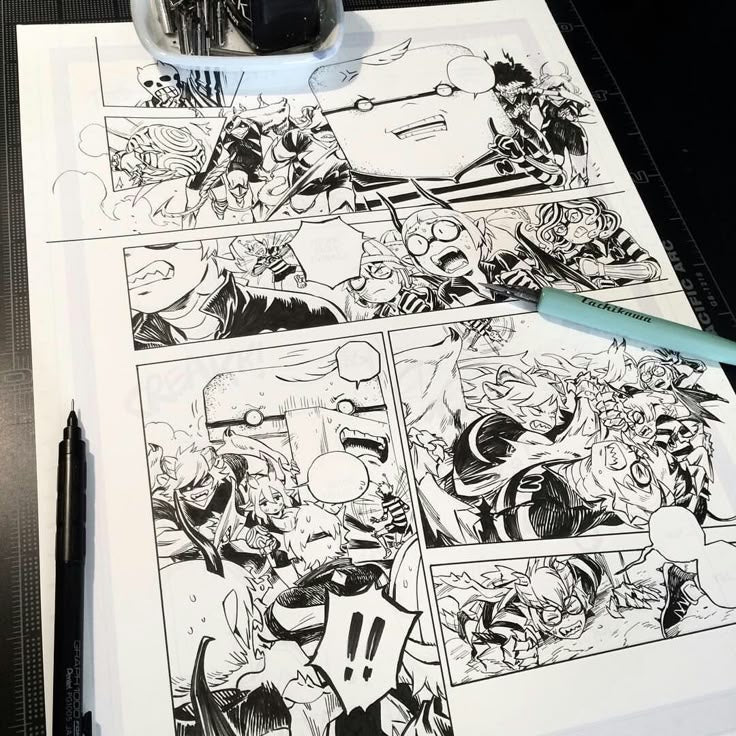
How To Make a Real Manga Book: From Spine Width to Bookbinding
Share
Creating your very own manga book can be an exciting and rewarding project. Whether you’re looking to publish your stories or simply want a physical copy of your creations, knowing how to make a proper manga book is essential. This guide covers the two vital steps in manga bookmaking: calculating the spine width and the bookbinding process. By the end, you'll have the knowledge to create a neat, professional-looking manga book.
Understanding the Basics of Manga Bookmaking
Making a real manga book isn't just about drawing characters and writing scripts. The physical construction of the book matters just as much. Two core skills come into play:
- Calculating the spine width so your book looks balanced and the pages sit perfectly.
- Binding the book securely to keep all pages intact, with a clean finish.
Getting these steps right ensures your manga looks like a real published book, not just a stack of pages.

Calculating Spine Width
The spine width is quite literally the backbone of your manga book. It’s the measurement of the book's thickness when all pages are together. Figuring this out properly allows the cover and binding to fit correctly.
Why Precision Matters
An incorrect spine width leads to a poorly fitted cover – either too loose or too tight – that spoils your manga's overall look and durability.
What You Need
- A stack of your manga pages, printed or ready to bind
- A ruler or caliper for accuracy
- Calculator for measurements
- Paper thickness information (usually measured in microns or millimetres)
Step-by-Step Guide to Measure Spine Width
- Count Your Pages: Start by noting the total number of pages in your manga.
- Know Your Paper Thickness: Gather details on your paper’s thickness. This info may come from your printer or packaging, or you can measure with precision tools.
- Calculate Total Thickness: Multiply the number of pages by the thickness of each page.
- Add Extra Space for Binding: Depending on your binding style, leave a little extra width to accommodate glue or stitching. Typically, adding 10-15% of the calculated thickness works.
- Double Check: Measure the actual stack of pages with a ruler to verify your calculation. This ensures consistency.
Tips for Accurate Calculation
- Use a calliper if possible to prevent human error.
- Avoid using overly thick paper unless you want a very chunky manga.
- Always factor in the cover thickness if using hard covers.
Knowing your precise spine width saves headaches during binding and gives your manga a professional edge.

The Bookbinding Process
Bookbinding is the process of physically assembling pages and attaching covers to form a complete book ready for display and use.
Binding Methods Suitable for Manga Books
Depending on your style, resources, and desired finish, you can choose among these popular binding methods:
- Perfect Binding: Pages glued at the spine with a soft cover, common in commercial manga.
- Saddle Stitching: Pages folded and stapled along the fold line; best for thinner manga or zines.
- Sewn Binding: Pages sewn together with thread along the spine—durable and traditional.
- Tape Binding: A simpler method, where a strong tape reinforces the spine.
What You'll Need
- Suitable glue (PVA/bookbinding glue)
- Needle and strong thread (if sewing)
- Binding tape (optional but helpful)
- Bone folder or heavy ruler to press pages
- Clamps or heavy books to hold glued spines
- Scissors, ruler, cutting mat
Step-by-Step Perfect Binding
- Prepare Your Pages: Organise the manga pages in order, and ensure edges are clean and trimmed.
- Create the Spine Edge: Use a bone folder or ruler to slightly roughen the edge that will be glued; this helps adhesion.
- Apply Bookbinding Glue: Generously apply glue to the spine edge of the pages.
- Clamp Pages Together: Use clamps or heavy weights to hold the pages tightly while drying. Let the glue set fully (overnight if possible).
- Attach the Cover: Cut your cover material with the spine width plus front and back covers. Wrap the cover around the glued spine and press firmly.
- Final Pressing: Place the finished book under a weight to dry completely and ensure everything sticks well.

Safety and Precision Tips
- Work in a clean, flat workspace to avoid paper misalignment.
- Wear gloves if handling glue often.
- Measure twice, glue once to minimise mistakes.
If you want to explore other methods, sewing bindings offer great durability but take more time and skill.
Additional Resources and Support
If you enjoy making manga books and want to support the creators behind tutorials like this, consider supporting Mostafa Naser’s creative efforts via his Ko-fi page. You'll find valuable content and more help for manga creators alike.
Liking and subscribing to channels sharing manga crafting knowledge not only helps creators continue their work but builds a thoughtful community around bookmaking. Don’t forget to share your own progress and questions to keep the conversation alive.
Conclusion
Making a real manga book involves more than just story and art. Attention to detail in calculating the spine width and choosing the right binding method ensures your manga looks professional and durable. With patience and the right tools, you can create manga books that you'd be proud to show off.
For further guidance on constructing comics and manga, this detailed tutorial offers clear, practical steps to take your project from idea to finished product.
Turn your manga dreams into reality by mastering these essentials—your readers will thank you for it.
